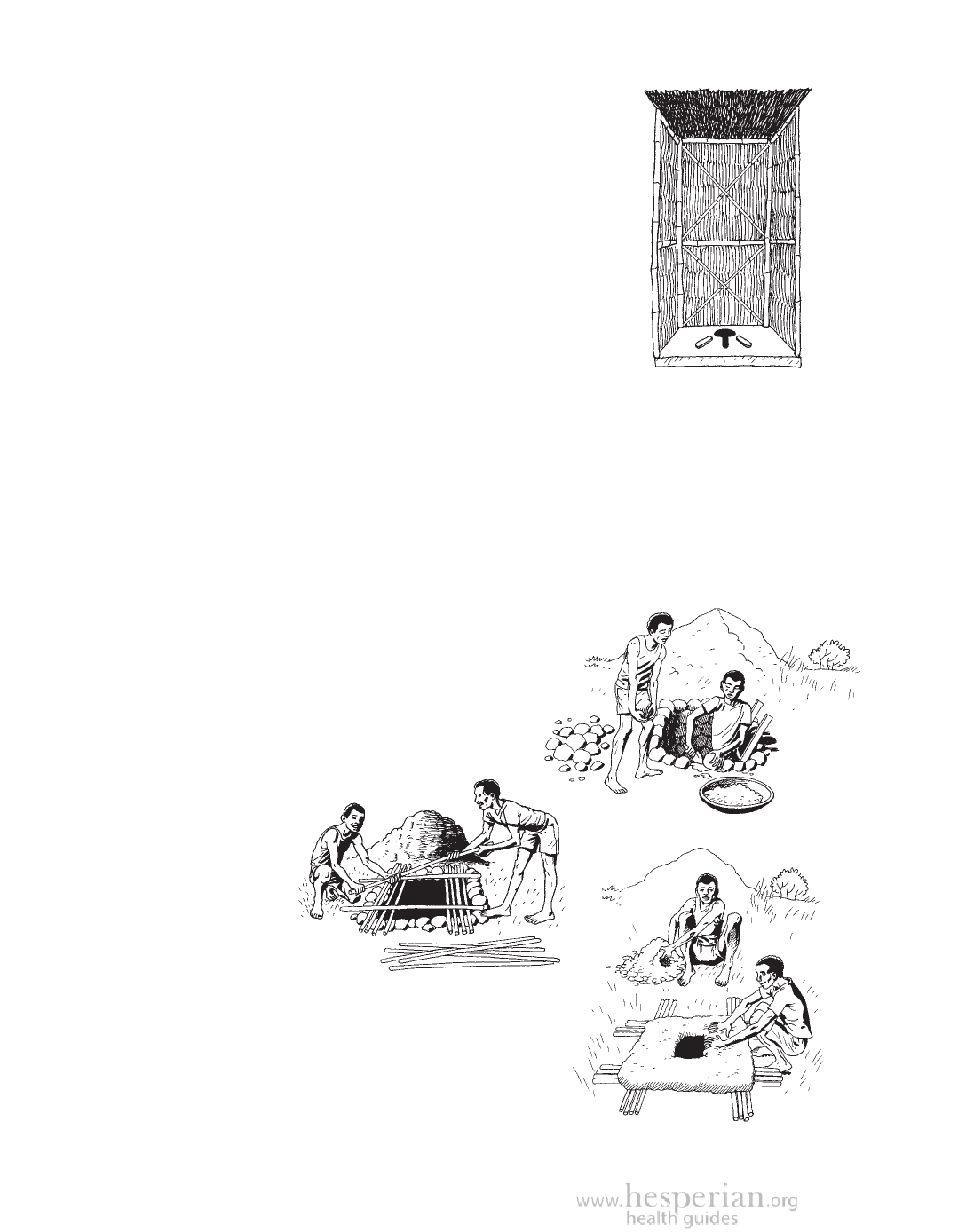
120 Building Toilets
Closed pit toilets
A closed pit toilet has a platform with a hole in it and a
lid to cover the hole when it is not in use. The platform
can be made of wood, concrete, or logs covered with
earth. Concrete platforms keep water out and last many
years. A closed pit toilet should also have a lining or
concrete ring beam to prevent the platform or the pit
itself from collapsing. (To make a concrete platform and
ring beam, see pages 121 and 122.)
The ventilated improved pit (VIP) toilet shown on
page 123 uses a vent pipe to reduce smells and flies.
A problem with pit toilets is that once the pit is full, the toilet can no longer
be used. To take advantage of the waste in full pits, plant a tree on the site.
To do this, remove the platform, ring beam, and shelter, and cover the waste
with 30 centimeters (2 handwidths) of soil mixed with dry plant matter. Allow
several months for the waste to settle, fill it with more soil, and plant a tree.
Another option is to add soil frequently while the toilet is in use and let it
sit for 2 years to allow the waste to decompose. Then dig it out, use the waste
as fertilizer, and use the pit again. Always wash hands after handling and
digging the soil around toilets.
To make a closed pit toilet
1. Dig a hole less than 1 meter across
and at least 2 meters deep.
2. Line the top of the pit with stones,
brick, concrete or other material that
will support a platform and prevent
the pit from collapsing.
A concrete ring
beam works
well (see
page 122).
3. Make a
platform
and a shelter
to put over
the pit. A concrete
platform works best,
but local materials like logs or
bamboo and mud can work too.
If you make a platform from logs,
use wood that does not rot easily.
A Community Guide to Environmental Health 2012